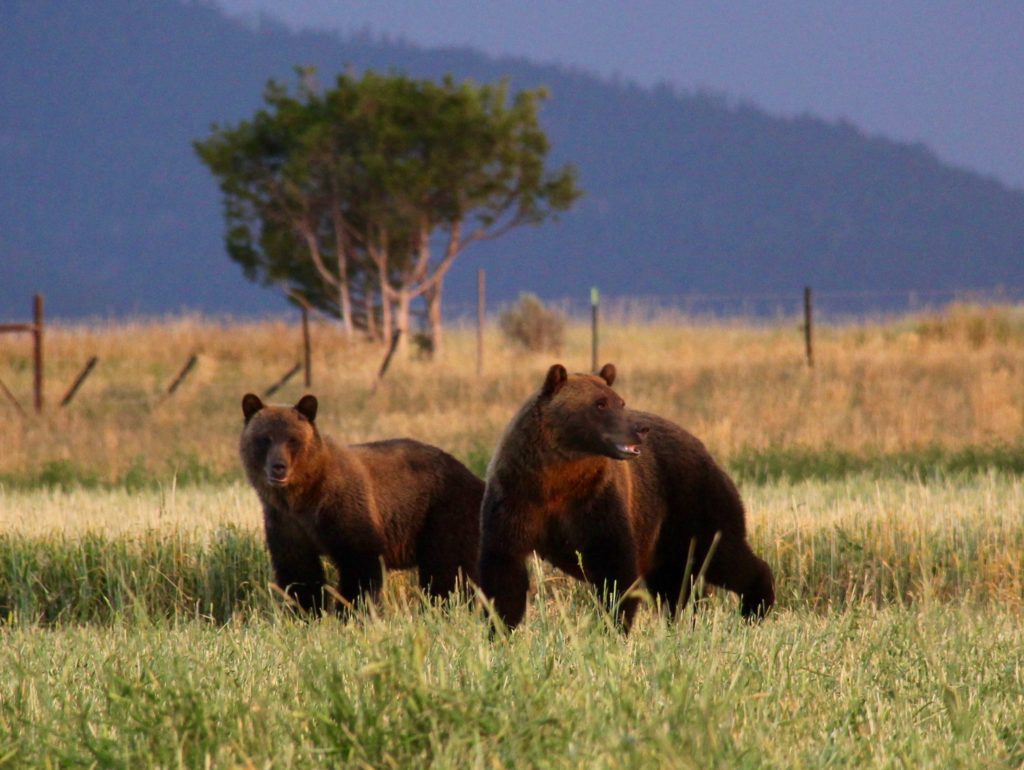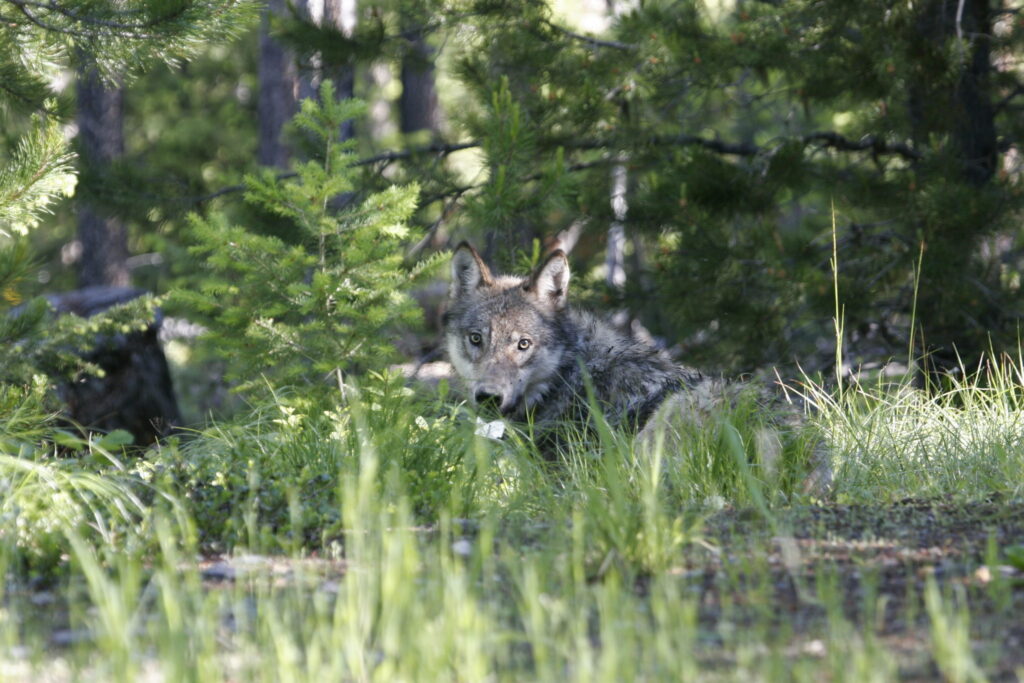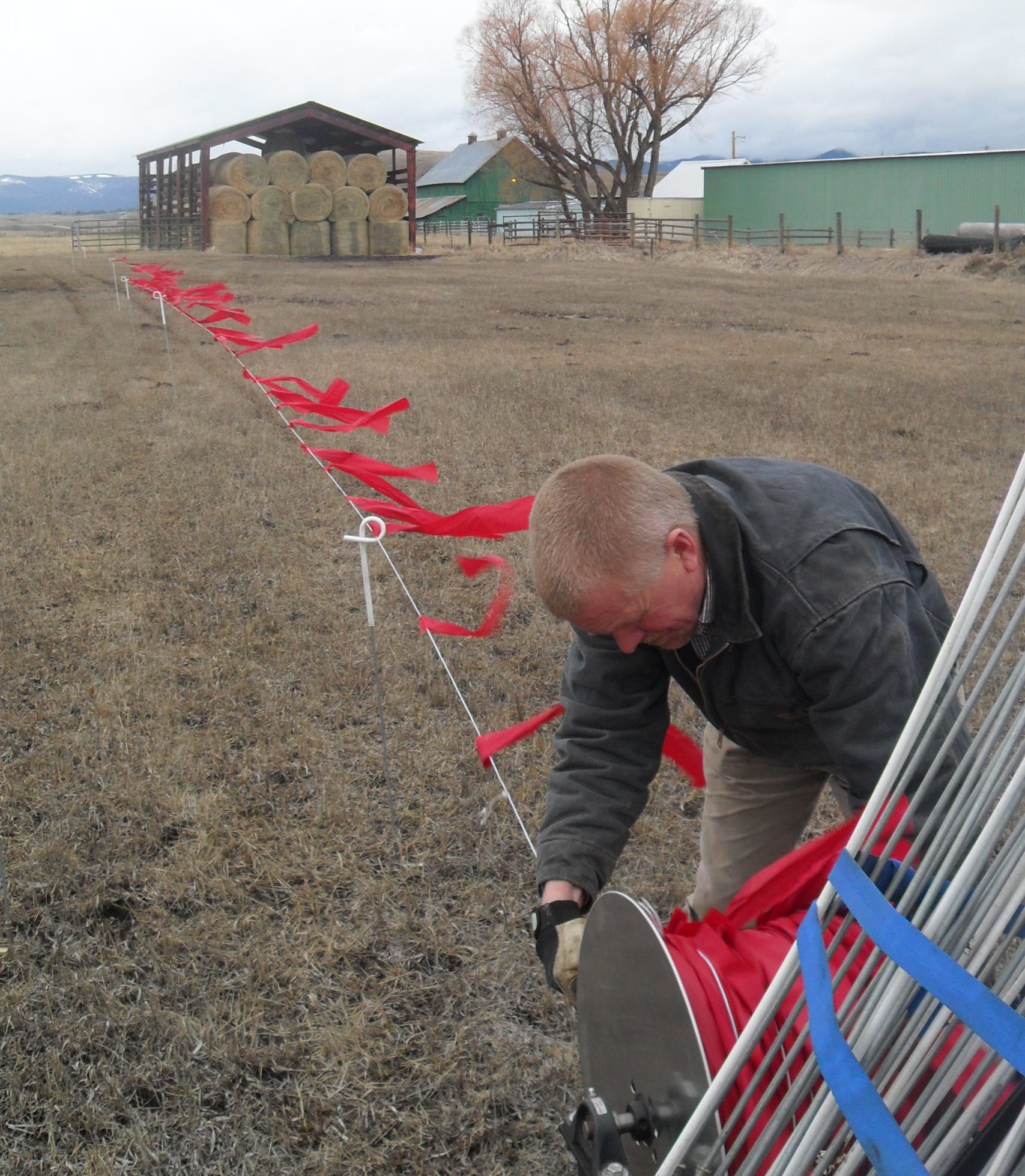
Living with Bears & Wolves
Living With Bears and Wolves in the Blackfoot
The Blackfoot watershed forms the southern end of the Crown of the Continent, a 10-million-acre ecosystem that comprises one of the most ecologically diverse and intact ecosystems on earth. A number of large carnivores call this area home, including grizzly bears and gray wolves. As grizzly bear and gray wolf populations have rebounded since the 1970s, these animals have come into increasing contact with surrounding human populations. Privately owned lands comprise roughly 25% of the Blackfoot watershed’s 1.5 million acres. When human populations overlap with carnivore habitat, conflicts can occur.


Conflicts include incidents like bears getting into pet or livestock feed, knocking down a bird feeder, getting into unsecured garbage, destroying beehives, killing livestock, or threatening human safety. When conflicts began to rise in the Blackfoot watershed, the Blackfoot Challenge began bringing stakeholders together to pioneer preventative measures that proactively addressed conflicts.
In 2000, the Blackfoot Challenge began meeting with wildlife management agencies to discuss concerns among local residents about increasing grizzly bear activity and conflicts in the Blackfoot watershed. Grizzly bear populations were expanding into historic ranges on private lands in the Blackfoot and ranchers reported livestock losses to grizzlies. A fatal human grizzly bear attack in 2001 solidified the effort to find ways to reduce conflicts between bears and people in the Blackfoot.

Early efforts to better understand the location and nature of grizzly bear conflicts revealed that conflicts were occurring at beehives, uncontained garbage sites, calving lots, and carcass “boneyards.” Shared understandings of the nature of conflicts with bears led to the development of a variety of preventative methods, including setting up electric fence around attractants, effective garbage containment and management, and picking up and composting livestock carcasses. These efforts help conserve grizzly bear populations while protecting human safety and reducing impacts to ranching livelihoods.
By the time that gray wolves recolonized the Blackfoot watershed in 2007, many of the strategies being implemented to reduce conflicts with grizzly bears were also effective in reducing conflicts with wolves, including electric fencing and carcass pick up. Additional strategies implemented since that time include the range rider program and turbo-fladry fencing.
Today, approximately 60 grizzly bears and approximately 15 packs of gray wolves call the Blackfoot watershed home. Grizzly bear populations are rising at approximately 3% per year, while gray wolf populations remain stable. These animals continue to show us where we need to focus our efforts, form new partnerships, and adapt new strategies.
One of the best things we’ve ever done to solve our problems is build trust and credibility between agencies and landowners through civil meetings. If you don’t have trust, you can have all the tools in the world, but it’s probably not going to work.
-Randy Gazda, Retired U.S. Fish & Wildlife Service, Wildlife Committee Chair
To learn more about the history of the Blackfoot Challenge Wildlife Committee and the development of grizzly bear conflict reduction in the Blackfoot, we invite you to read: “Human-Grizzly Bear Coexistence in the Blackfoot Watershed, Montana: Getting Ahead of the Conflict Curve” by Seth Wilson, Greg Neudecker, and Jamie Jonkel, and “Learning to Live with Wolves: Community-based Conservation in the Blackfoot Valley of Montana” by Seth Wilson, Liz Bradley, and Greg Neudecker.